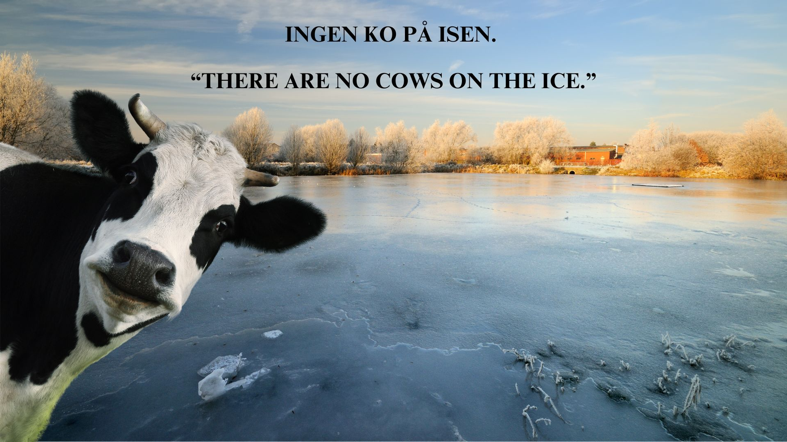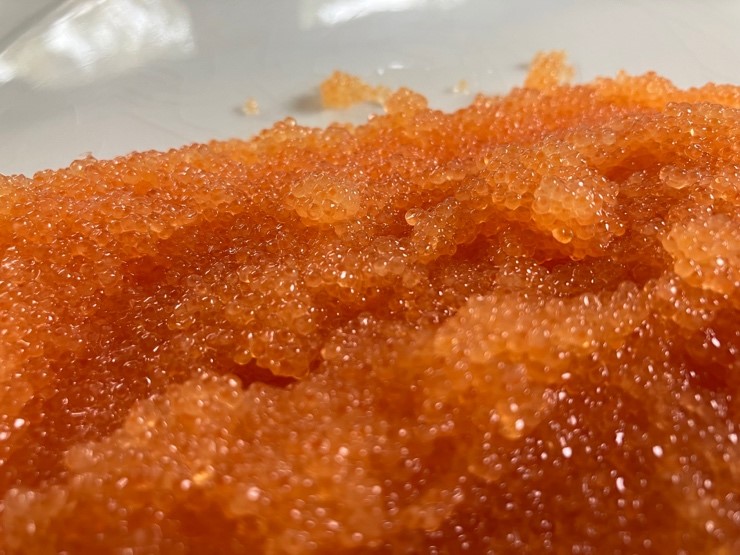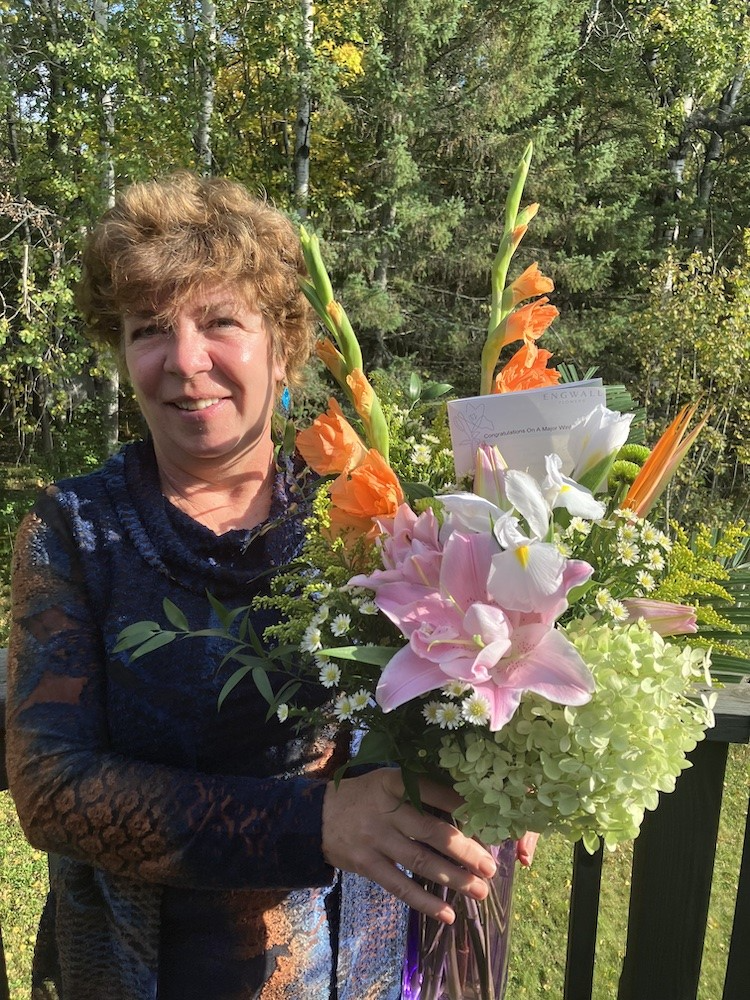Training the next generation of Great Lakes commercial fishers
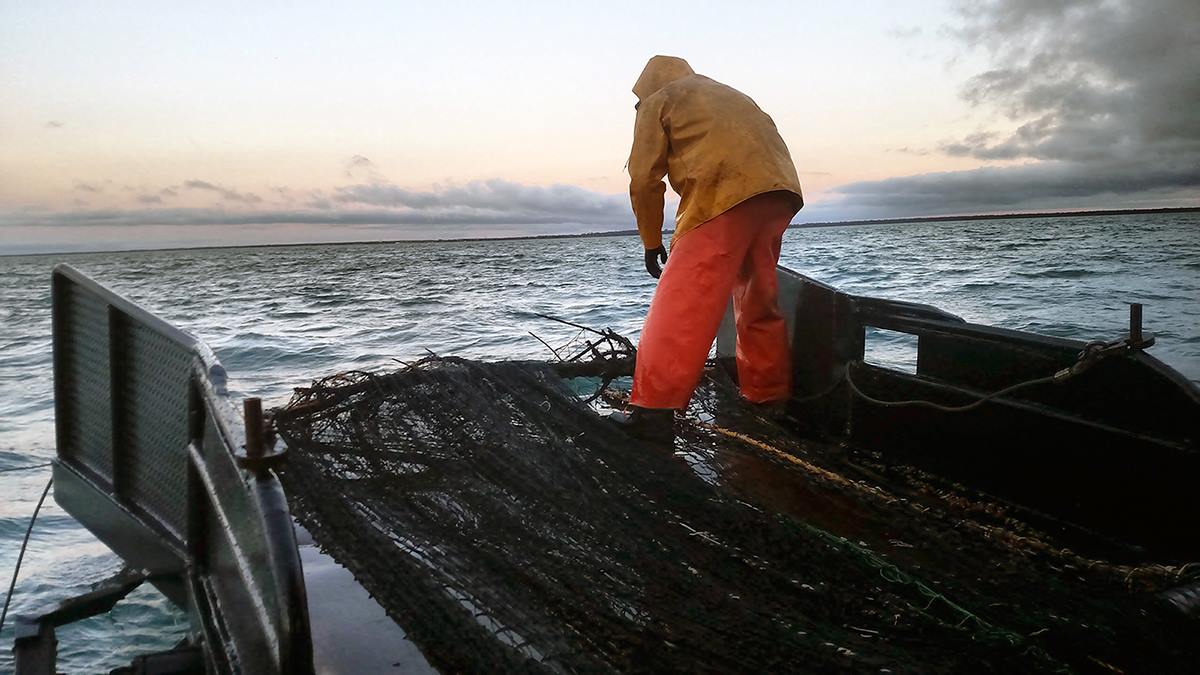
A Great Lakes commercial fisher cleans a fishing net. Photo credit: Wisconsin Sea Grant
A new publication from a team of Sea Grant researchers lays out a framework for training the future fleet of small-scale commercial fishers and processors in the Great Lakes.
The study, published in the March issue of the Fisheries magazine, proposes place-based, adaptable training content for the Great Lakes Future Fishers Initiative, an apprenticeship program aimed at recruiting and preparing young people for commercial fishing.
The initiative responds to the industry’s concerns about the lack of a future workforce.
“It’s an aging fleet. It’s definitely a hard business,” said Titus Seilheimer, fisheries outreach specialist with Wisconsin Sea Grant and coauthor of the study. “We talked to the industry folks and found out what they needed. And you know, what they need is people.”
Seilheimer, alongside Wisconsin Sea Grant’s Food–Fish Outreach Coordinator Sharon Moen and Michigan Sea Grant’s Lauren Jescovitch, surveyed and conducted focus groups with those involved in the Great Lakes commercial fishing industry, including Anishinaabe fishers, multigenerational fishing families and staff from regulatory agencies, to learn more about workforce challenges and what’s needed to be successful in the job.
“A message we heard was that everyone’s needs were different,” said Seilheimer. “Different businesses wanted different things.”
As a result, the Great Lakes Future Fishers Initiative framework is designed to be used more as a menu rather than a curriculum, meaning businesses can select training content that is relevant to their workforce. Content is categorized into three topic areas: fundamental skills (e.g., business planning and marketing), processing skills (e.g., food safety training and knife handling), and deckhand skills (e.g., gear repair and boat navigation).
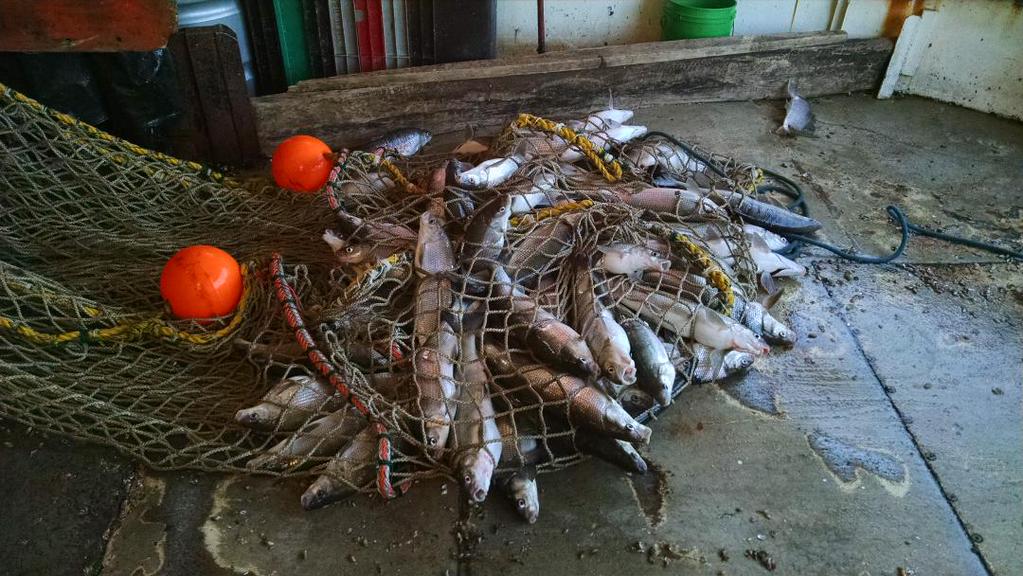
Lake whitefish are the most valuable fishery in the Great Lakes commercial fishing industry in Wisconsin. Photo credit: Wisconsin Sea Grant
Another major takeaway from the survey was the importance of exposing people to industry at a young age. Of those that took the survey, 92% had some sort of interaction with commercial fishing and processing prior to doing it themselves.
“It wasn’t just a random job posting that they saw and applied to,” said Jescovitch. “Almost everybody that works in the industry had some previous exposure to [it.]”
Jescovitch said that’s where Sea Grant is well positioned to help.
“We can go into schools or even younger groups and [say], ‘hey, this is a possible career path,’ and make sure that people are just even aware that it exists.”
The Great Lakes commercial fishery is a multimillion-dollar industry in Wisconsin, with lake whitefish netting the highest value. Nearly 2 million pounds of lake whitefish were harvested from Lake Michigan and Lake Superior in 2020.
While the industry is small compared to that of the salty coasts, the research team emphasized just how embedded it is in the communities where it occurs. Losing fishing means losing part of the culture.
“This has been a part of our coastal communities for as long as people have lived on the shores of the Great Lakes,” said Seilheimer, pointing out that some communities, like Two Rivers, Wisconsin, have fishing imagery on their town logos and welcome signs.
For tribal fishing businesses, like the Red Cliff Fish Co., commercial fishing and processing is also a way to preserve Indigenous knowledge and traditions.
And much of the fish stays local. The study found that a little over 68% of processed fish—which refers to fish sold as filets or made into other products—stays within 100 km or 62 miles of where it’s caught.
Local harvest means local food security, and as Moen also pointed out, local pride. Commercial fishers and processors can enjoy knowing they put food on the plates of their neighbors. It’s a perk of the job.
“You’re providing good, healthy food for families in a community that you care about,” said Moen. “You can go home at the end of the day feeling like, ‘Wow, I made a difference in some family’s life.’”
The research team is currently applying for grant funding to get the program off the ground—and into coastal communities across the Great Lakes.
The post Training the next generation of Great Lakes commercial fishers first appeared on Wisconsin Sea Grant.News Releases | Wisconsin Sea Grant
News Releases | Wisconsin Sea Grant
https://www.seagrant.wisc.edu/news/training-the-next-generation-of-great-lakes-commercial-fishers/

